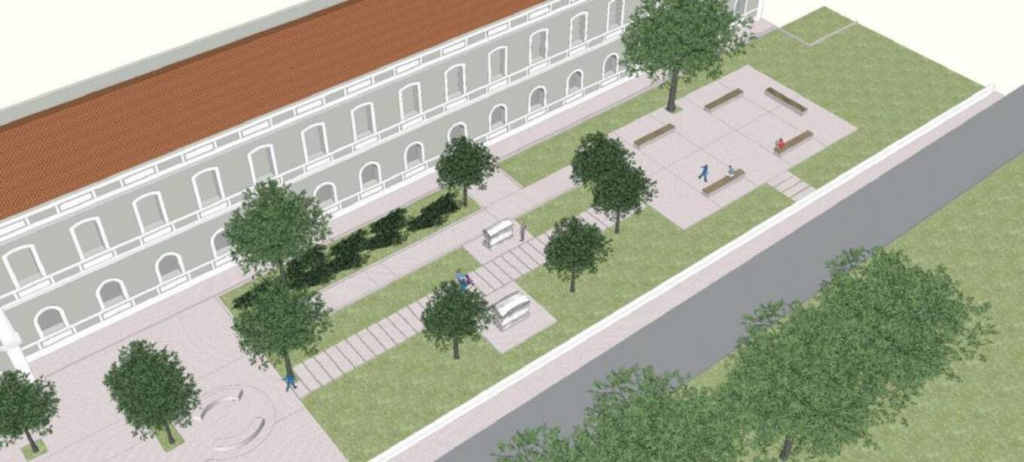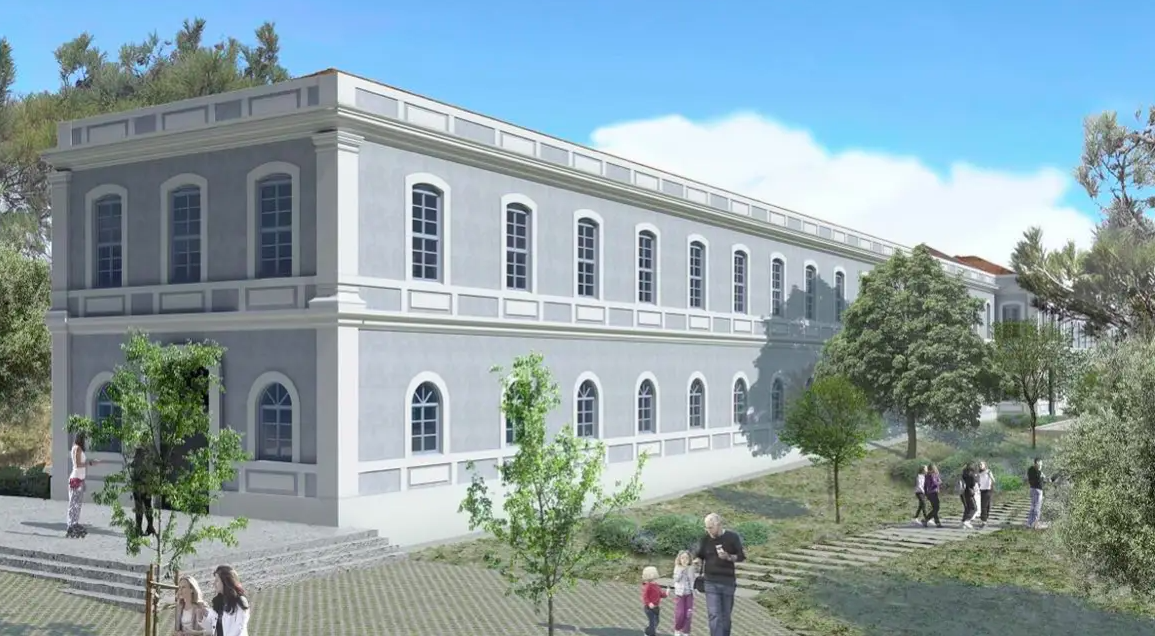The restoration of the historic A3 barracks building at the former Pavlos Melas in Thessaloniki is progressing well, with plans for it to house the Museum of Artifacts from the Thessaloniki Metro excavations. The project, with a budget of €14.5 million, is expected to be completed by the end of 2025.
The A3 building, covering an area of approximately 3,000 square meters, dates back to around 1895 during the final years of Ottoman rule and is considered one of the first organized barracks in Greek territory. In addition to showcasing artifacts within the building, there will be a permanent exhibition of archaeological finds from the excavations conducted by the Thessaloniki City Archaeological Authority during the construction of the metro.

The design will ensure that the southern courtyard functions as an open-air museum, featuring exhibits such as a late antique villa excavated at the “Agia Sofia” station and two sarcophagi from the western necropolis of Thessaloniki, uncovered during the construction of the “Democracy” station.

Statement from the Minister of Culture
Cultural Minister Lina Mendoni stated: “The restoration of the A3 barracks building at the former Pavlos Melas and the accompanying archaeological exhibitions are funded by the Ministry of Culture, with resources amounting to €14.5 million from the Recovery Fund. In building A3, we are creating a modern and functional museum to display and highlight a portion of the numerous findings revealed during the Thessaloniki Metro excavations.”

The establishment of the museum is part of a broader Strategic Redevelopment Plan for the former barracks, transforming the area into a green public space with metropolitan significance while showcasing the cultural heritage of Thessaloniki. The development of the courtyard and surrounding area into an outdoor archaeological exhibition will feature the detached mosaic floors, heating systems, and walls of the villa from the “Agia Sofia” station, providing visitors with an immersive experience that complements the museum exhibition within the A3 building. Visitors will gain insights into the size and layout of the villa, its spatial organization, the construction structure of its various elements, and the high artistic value of its decorative mosaics.

Excavation Highlights
The late antique villa was discovered during the excavation of the “Agia Sofia” station between 2017 and 2018. The villa’s mosaics date back to the second half of the 4th century to the early 5th century AD. All preserved parts of the mosaic floors were detached and restored. Additionally, the two hypocausts from the baths and the walls of the southern room, including the entire superstructure of their foundation, were also preserved.


The sarcophagi originate from the western necropolis of Thessaloniki and were uncovered during the construction of the “Democracy” station. One is an intact marble sarcophagus from the 4th century, containing the remains of three individuals and gold grave goods. The second is a 3rd-century inscribed marble sarcophagus that held four individuals and minimal grave goods, indicating it may have been disturbed in antiquity.

Ask me anything
Explore related questions





